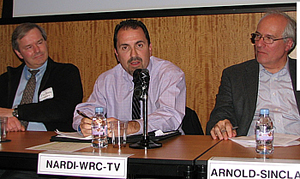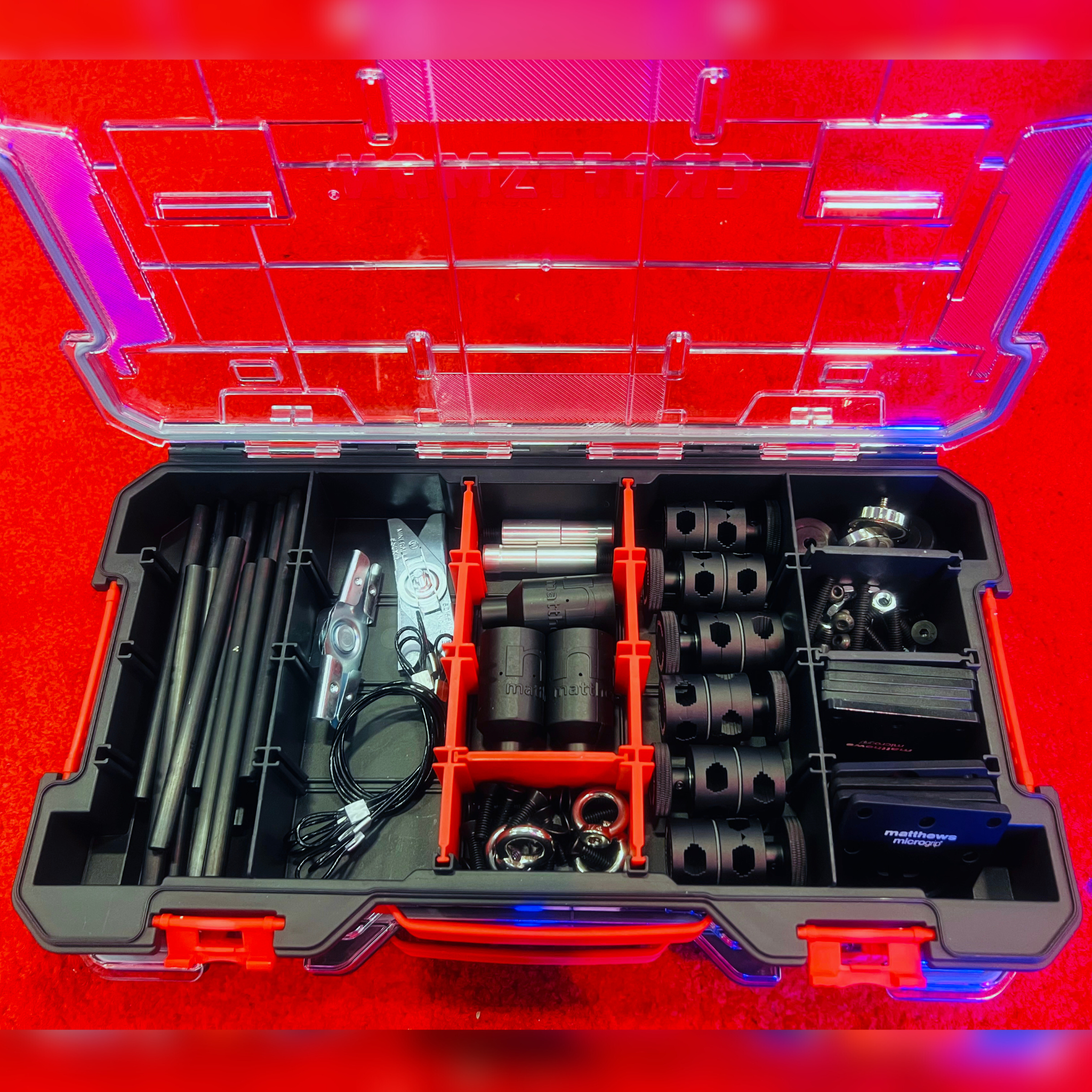Maalox, Scotch Recommended for Transition Date
Broadcasters in Washington are ready for the DTV transition, but engineers are warning of plenty of problems, including indigestion.
"On the evening of Feb. 17 in my office, there'll be a case of Maalox and there'll be a case of scotch," said MSTV President David Donovan. "I've been told to drink the Maalox neat."
Donovan appeared with broadcasters and other industry leaders in a special DTV transition panel presentation organized by the Washington, D.C., SMPTE section Nov. 20. Many aspects of the Feb. 17, 2009 event were covered, including distribution and setup of converter boxes; antenna requirements; and the overall readiness of broadcasters, cable systems and satellite program providers for the switch.

(L-R) Jim Beahn, director of engineering, WTTG and WDCA-TV; Bill Nardi, WRC-TV director of technology; and Harvey Arnold, Sinclair Broadcast Group director of engineering "From a political standpoint, the world will be a changing place," Donovan said. "The Obama administration-in particular the transition team-is very, very concerned about the transition. It will happen right as the new administration takes office. We need to get it right."
Panelists' presentations were moderated by the NAB's Graham Jones, chair of the ATSC planning committee, who said he had seen many changes in television during his career, but none of these has been more profound than the transition to digital broadcasting.
Several Washington-area television station engineering heads reported that their stations were fully prepared, and had been for some time, for the rapidly approaching February "D-Day."
"February 17 is a big night," said Jim Beahn, director of engineering for Washington's WTTG and WDCA-TV. "Since [both stations] are currently operating on our post-transition channels, the only thing we really need to do is to turn the analog transmitters off and then go out for a beer or something. We're pretty much done."
Chris Lane, vice president of engineering and technology at PBS station WETA-TV in Arlington, Va., commented that his station had been operating a digital transmitter for about two years, and that some of the digital equipment at the station had been in place so long that it's now being phased out.
But even with most pre-transitional work completed on the station side of things, most admitted that there is still a lot to be done to ready the off-air viewing public for the digital world ahead.
"We're ready; our viewers are not," said Bill Nardi, director of technology at WRC-TV in Washington. "I get five to 10 e-mails a day from viewers who say they get us great on analog, but are not getting us on digital at all. A lot of times we find that they're using an indoor antenna or a VHF antenna and they're just not going to get us this way."
Nardi remarked that a big issue is in dealing with those individuals who are watching the station's analog signal well beyond the station's DMA and find they have no digital reception at all.
"These are tough conversations," he said. "We want to provide help for everyone. You don't want to tell them to buy cable. We're not in the business to be pushing this around.... What we're finding is that engineers are having to become customer service personnel."
Nardi said that his station is planning a series of analog "soft" shutoffs to test viewer off-air readiness, noting that problems have been revealed by others performing such tests.
"We're finding in other markets that 50 to 70 percent of folks calling in do not have coupons yet," Nardi said. "Even though the message has been out there for a long time, folks aren't realizing that it involves them."
Harvey Arnold, director of engineering for the Sinclair Broadcast Group, spoke about his own concerns.
"In both small and large markets, our main quest is to not lose viewers and to stay in business," said Arnold. "Broadcasters know how to install equipment and get things working at the station side; the big problem is getting people to receive it at their homes. This is very sobering."
Arnold said that since the migration to digital began Sinclair has been pushing to make reception easy for its viewers. However, this has not, and probably will not, be a goal that's easily achievable, due to multiple real-world issues such as multipath, insufficient signal strength, interference and channel swapping.
"We're trying to provide education and to make sure that viewers know what the situation is," he said. "It's really complicated when stations move from out-of-core to in-core channels. We have several stations that are switching channels and this is going to be very disruptive.... Education is going to be critical in the weeks following the transition to make sure that we don't just settle for people losing our signal."
Get the TV Tech Newsletter
The professional video industry's #1 source for news, trends and product and tech information. Sign up below.
James E. O’Neal has more than 50 years of experience in the broadcast arena, serving for nearly 37 years as a television broadcast engineer and, following his retirement from that field in 2005, moving into journalism as technology editor for TV Technology for almost the next decade. He continues to provide content for this publication, as well as sister publication Radio World, and others. He authored the chapter on HF shortwave radio for the 11th Edition of the NAB Engineering Handbook, and serves as editor-in-chief of the IEEE’s Broadcast Technology publication, and as associate editor of the SMPTE Motion Imaging Journal. He is a SMPTE Life Fellow, and a Life Member of the IEEE and the SBE.

